Openwork is an embroidery on fabric that is considered one of the oldest, has its own characteristic features and style. In fact, this method is quite easy, so it is ideal for beginners, and a master class is not particularly needed here.
- What can be decorated with openwork
- Tools and threads
- How to secure the working thread
- How to prepare fabric
- Such different openwork patterns
- Openwork on an embroidered base
- Complex multi-row openwork
- Openwork with complex interlacing of columns
- Openwork with intertwined columns in a split
- Openwork "tassel"
- Openwork "interlacing by thread count"
- Openwork "bug edge"
- Openwork "grafting into a split"
- Openwork "goat"
- Openwork stitch "columns" and "zigzag" stitch
- Complex openwork with intertwined columns
- Openwork "forked twig"
- Openwork "double rod"
- About ready-made openwork kits
- How to Properly Care for Patterned Items
What can be decorated with openwork
Since openwork looks very impressive and festive thanks to its openwork patterns, it has been used since ancient times to decorate the home. Tablecloths decorated with embroidery are still laid on tables, patterned curtains are hung on windows and doorways. Dresses, shirts, skirts and napkins are also decorated with this pattern.

Tools and threads
For openwork embroidery you will need:
- wooden or plastic hoops;
- spool threads;
- a loose embroidery fabric made of linen, cambric or canvas;
- tapestry needle with a slightly blunt end;
- scissors.
Please note! The thickness of the thread used depends on the texture of the material.
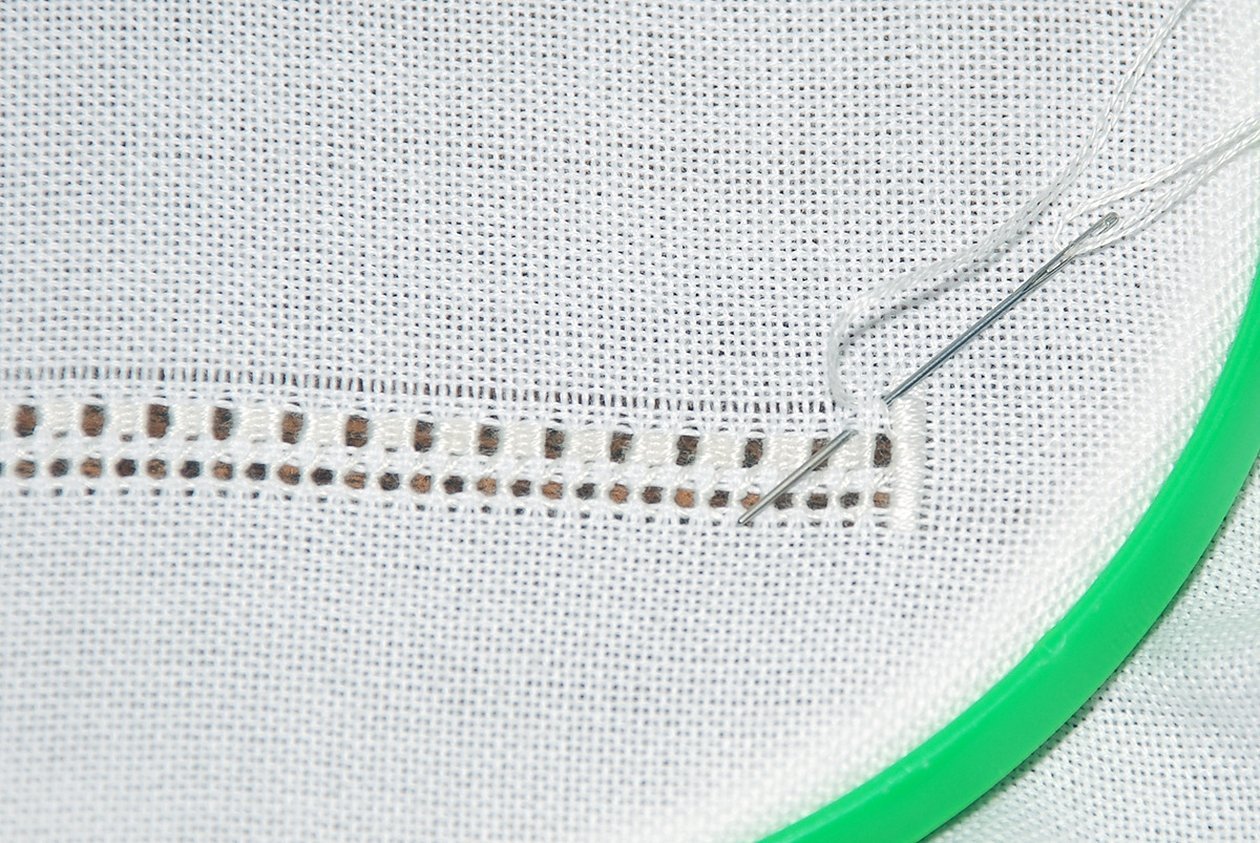
How to secure the working thread
The patterns are basted starting from the left side and moving to the right. The working area of the fabric should be held on the index finger. The thread is secured at the edge of the fabric, near the beginning of the row on the wrong side.
How to prepare fabric
Before you start embroidering, you need to prepare the fabric. A characteristic feature of the method is the connection of gaps in the fabric with lace patterns. Therefore, before starting work, you need to pull out several threads from the canvas. You can leave an empty line across the entire width or mark certain areas and, cutting along the edge of the pattern, remove them.
Such different openwork patterns
There is an incredible variety of patterns in openwork embroidery, embroidery patterns can be different not only in technique, but also in appearance and size. You can make a regular pattern by securing several threads, or you can create real elegant lace.
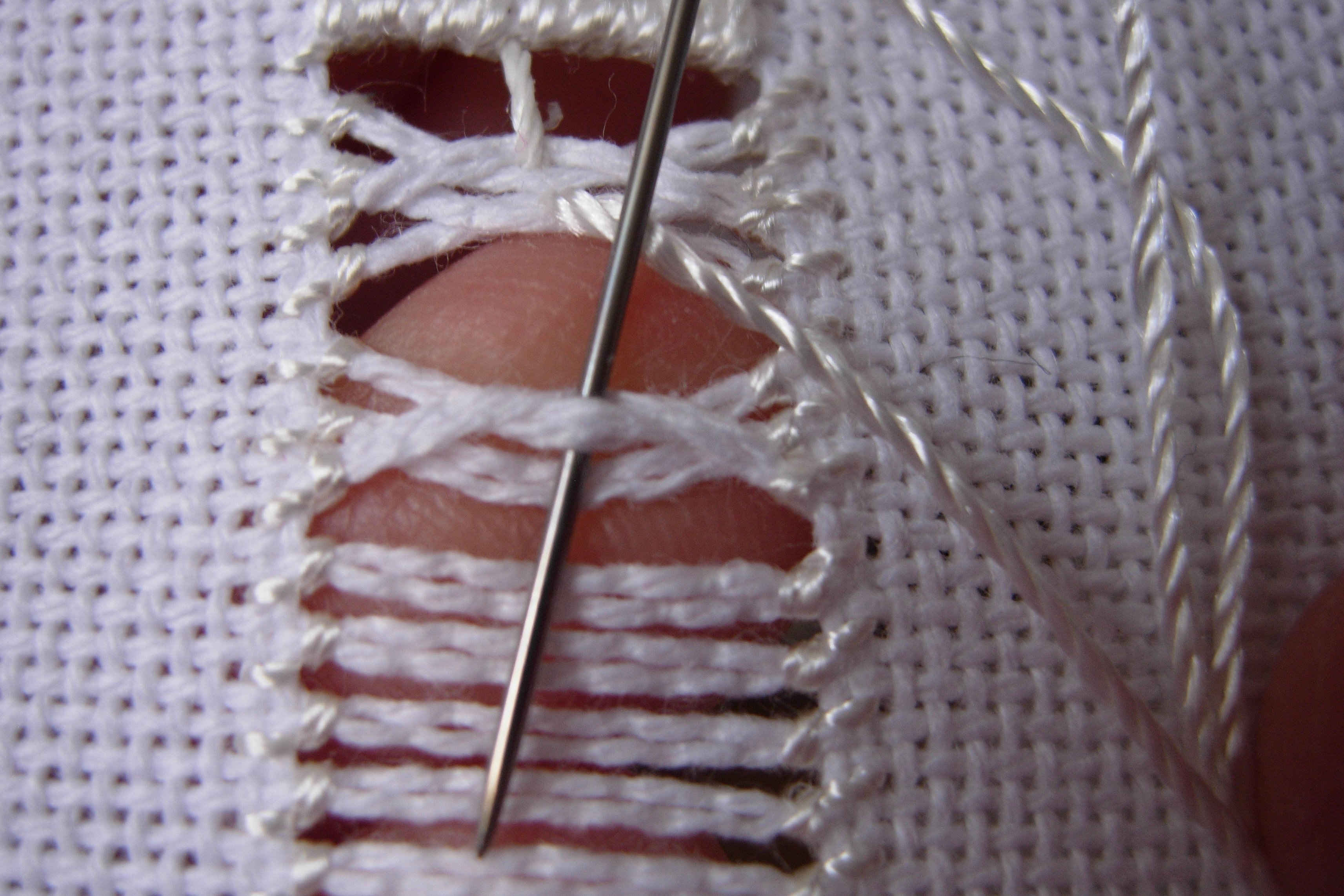
Openwork on an embroidered base
The basis for more complex patterns are mainly two patterns: "rod" and "columns". Most other patterns are made on their basis:
- "goat";
- "bug";
- "buckwheat";
- complex interwoven hemstitches, etc.
Important! Before implementing each pattern, you need to prepare the fabric by pulling out the required number of threads from it.
Complex multi-row openwork
Well-known multi-row openwork stitches are "panka" and "kopeechka". For "panka" you need to pull together two tassels between the rows at once and cover the remaining horizontal threads. And for "kopeechka" you need to pull together all the free threads one by one through the center of the square of threads remaining after pulling.
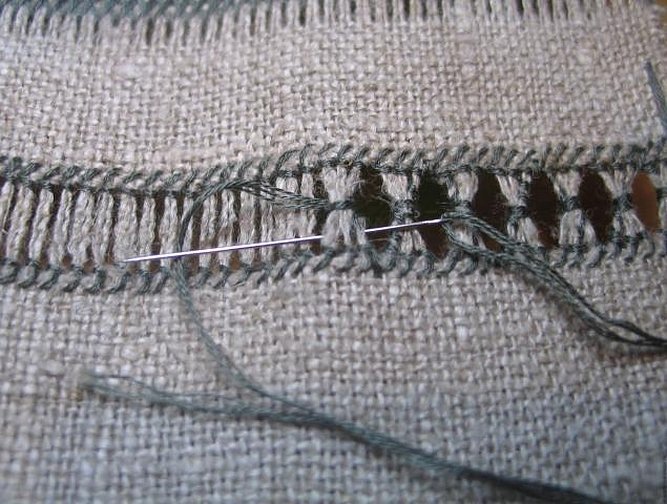
Openwork with complex interlacing of columns
This method is easier to perform, starting from the right part of the fabric towards the left. The openwork is made on the basis of the columns of the outer rows. First, grab the right part of the second column, and then take the entire third column from the left. Now you need to pick up the remaining half of the second column and pull out the embroidery thread.
Openwork with intertwined columns in a split
This type of embroidery looks like skewed or zigzag columns. It can be done based on the "tassel" pattern. Then you need to pull in bunches of 5 threads from one tassel and the same number from the other.
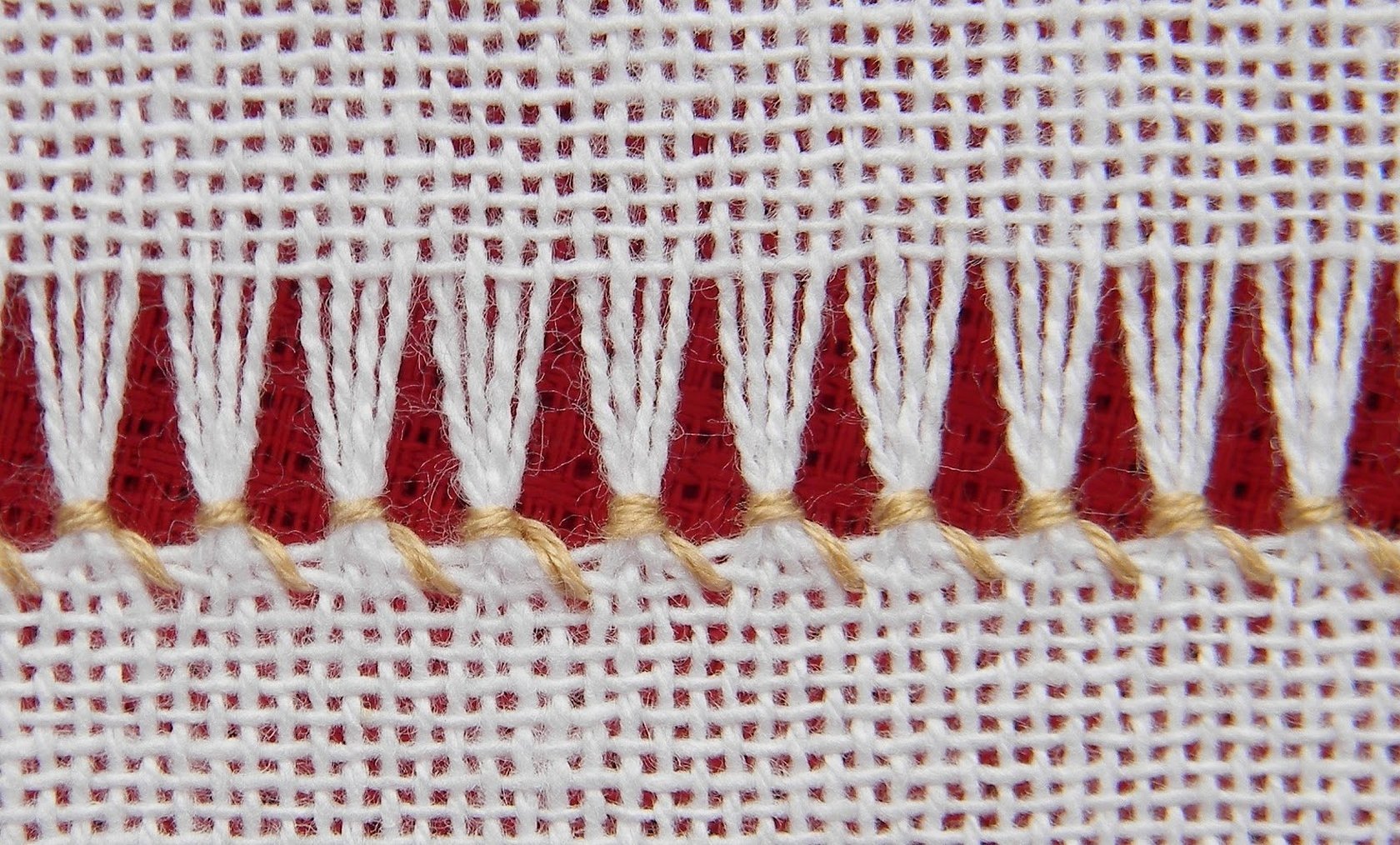
Openwork "tassel"
"Brush" is also known by another name - "single twig". The fabric is processed only from the front side. You need to pick up no more than three threads of the fabric with a needle. Then pass it under the threads to the right and insert the needle also from the right side. Pull all the picked up threads and continue in the same way.
Openwork "interlacing by thread count"
To embroider using this method, you need to follow the following step-by-step algorithm:
- From 5 to 7 threads are pulled out of the fabric. The final distance should be no less than 1 centimeter.
- The needle is inserted between the 4th and 5th threads and the 3rd and 4th threads are picked up. Then it is inserted in front of the 1st and 2nd threads and pulled out.
- Continue doing this until the end of the row. You need to tighten the needle with the embroidery thread, otherwise the pattern will not work.
Please note! You can use a thread that matches the fabric, or you can use a contrasting color.
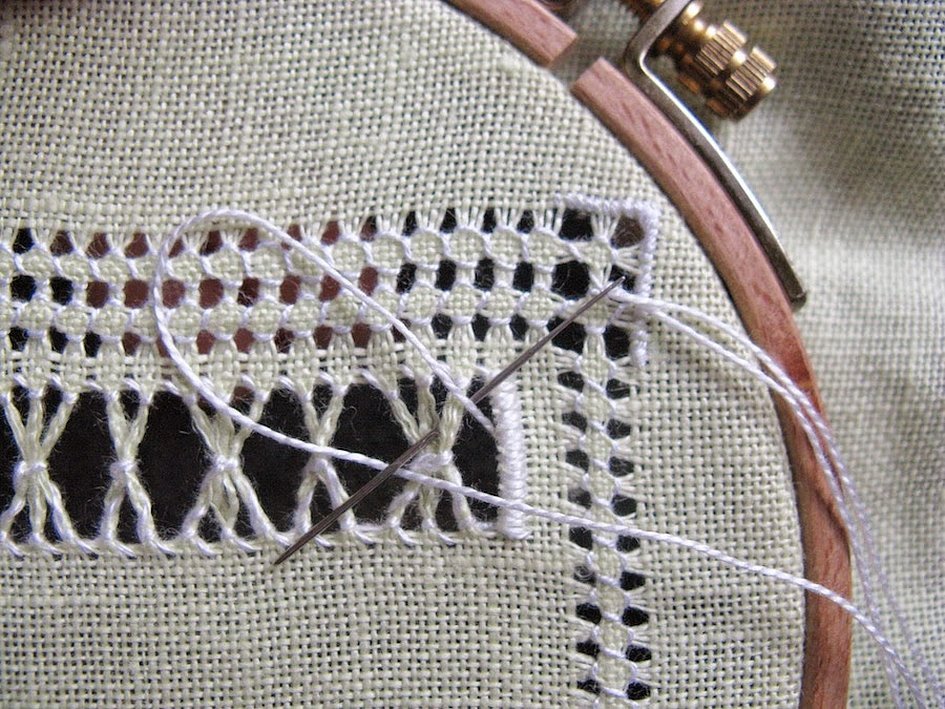
Openwork "bug edge"
To make the edge bug, you need to wrap the first twig twice and then do the "forward needle" method. You need to grab two bundles at once with a needle under the fabric, and take the remaining twig on top. After that, pull all three knots together. To move on to another cross or bug, you need to pass the needle from below.
Openwork "grafting into a split"
"Interlacing in a split" is very similar to "interlacing by thread count". First, secure the thread at the beginning of the row. Then, from left to right, begin to grab half of the bundles of the first and second columns, then take the remaining threads of the first and second columns. Continue embroidering in this way until the end of the row, constantly pulling the needle and thread.
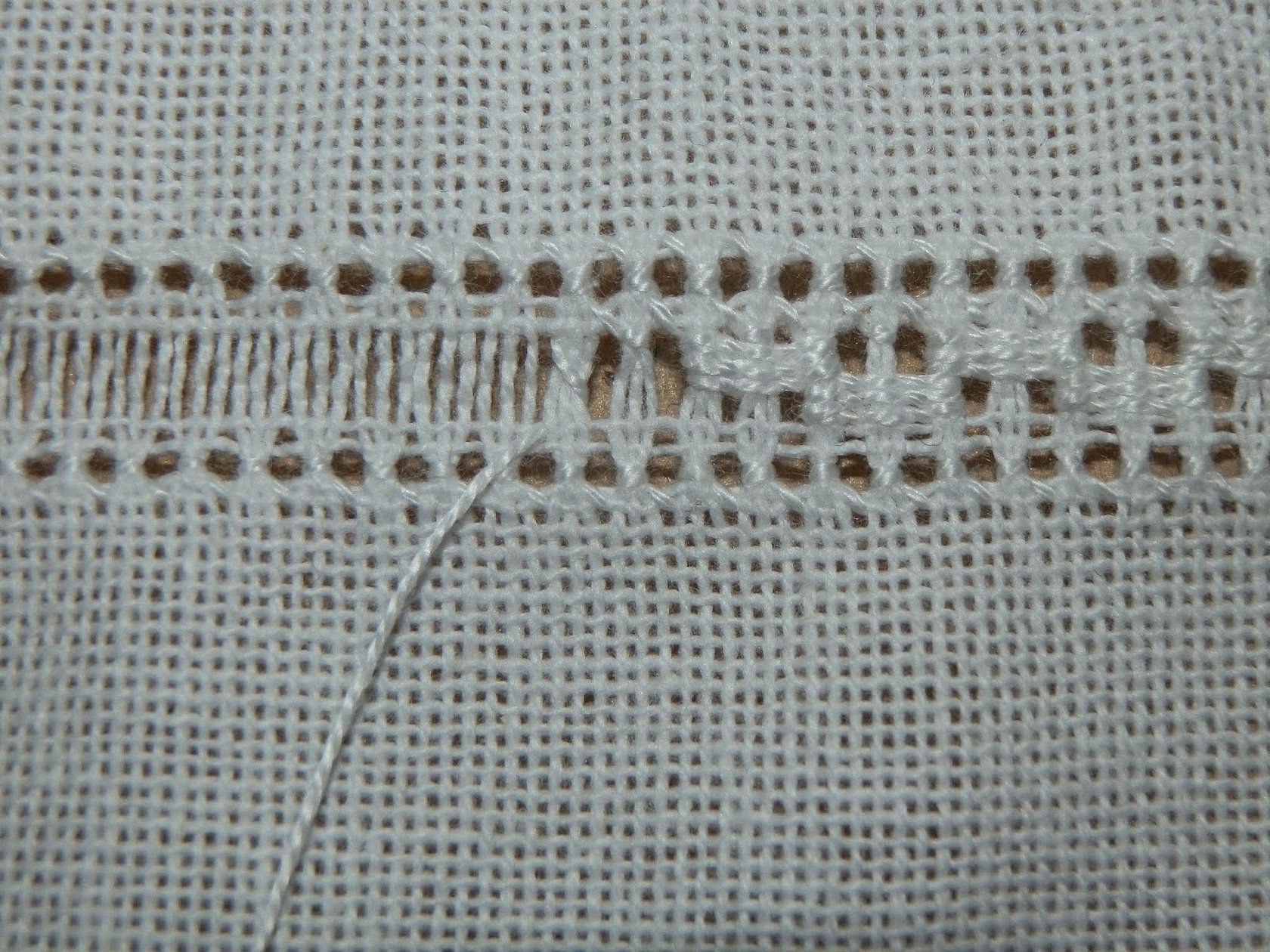
Openwork "goat"
"Goat" or "folded hemstitch" is made by pulling out 7 threads, and after combining the outer rows first into columns, then dividing them into two columns and then again combining one bundle from the first column, and the second from the second.
Openwork stitch "columns" and "zigzag" stitch
The "column" embroidery is a basic pattern for many patterns. Usually this openwork is embroidered with a thread that has the same color as the fabric itself. In some regions of Ukraine, the tradition of using red threads is widespread.
To make a column, you need to pull the threads out of the fabric so that three empty rows are formed. The first and third of them are sewn using the single rod method. You need to thread the needle in the second row from the beginning of the first and the end of the second rod and tighten it with a thread. Then continue wrapping the thread around the rods until you get dense columns. Then continue using the same method.
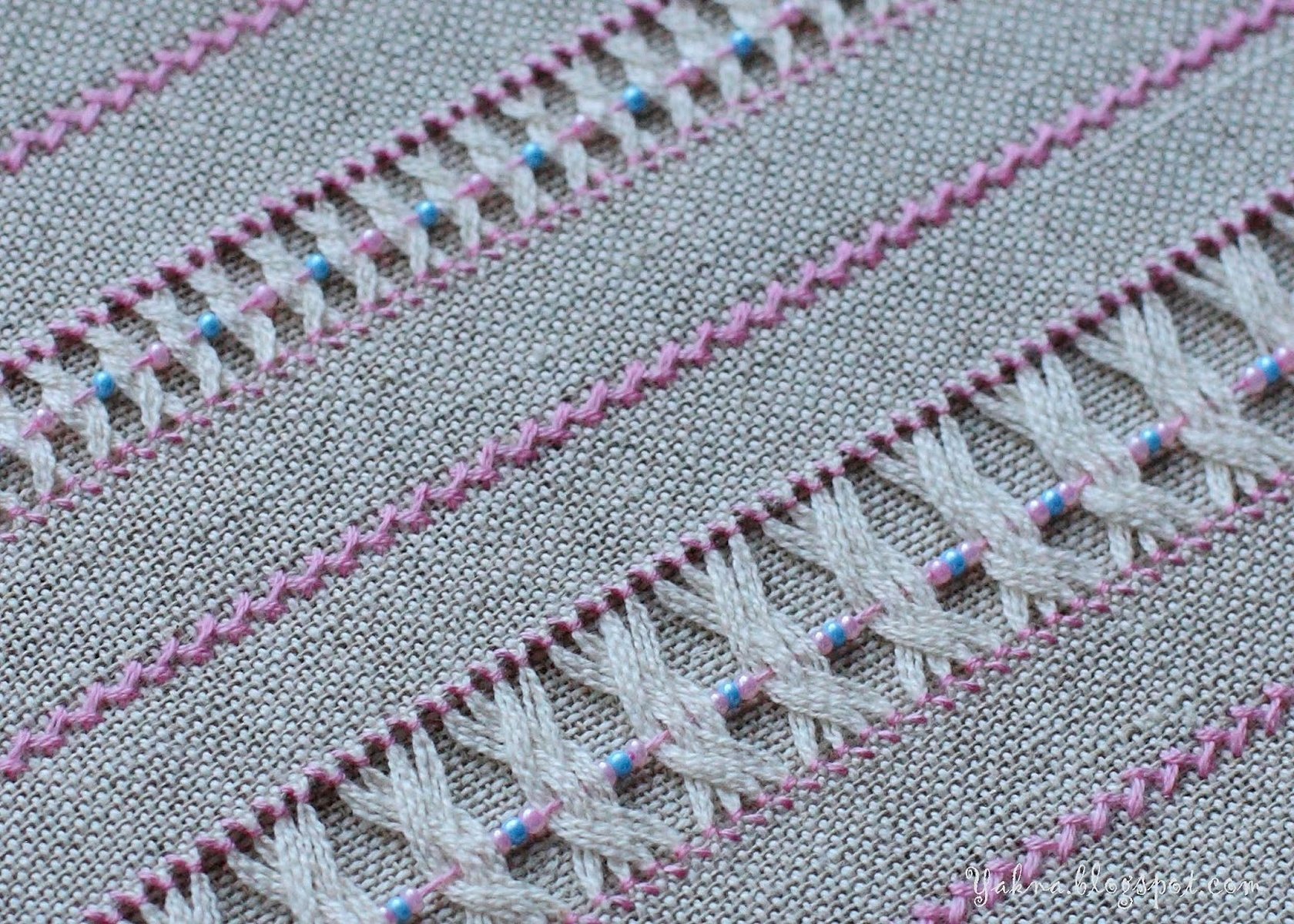
Complex openwork with intertwined columns
One of the well-known complex patterns that uses intertwined columns is the "buckwheat" pattern. The outer rows are embroidered using the same pattern as regular twigs. However, in the second row, to create columns, you need to pull out at least 5 threads to make a wide stitch. Then the work is turned upside down and the same method is done with the remaining row.
Openwork "forked twig"
The "split twig" is known by many other names: "lattice", "snake", "zigzag". In this method, each twig opposite the other must be divided in half. First, one side is processed, then, when moving on to the second, each twig must be divided into two and collected into one knot, half of each twig.
This pattern is often used as an addition or visual division of the canvas in more difficult embroidery techniques.
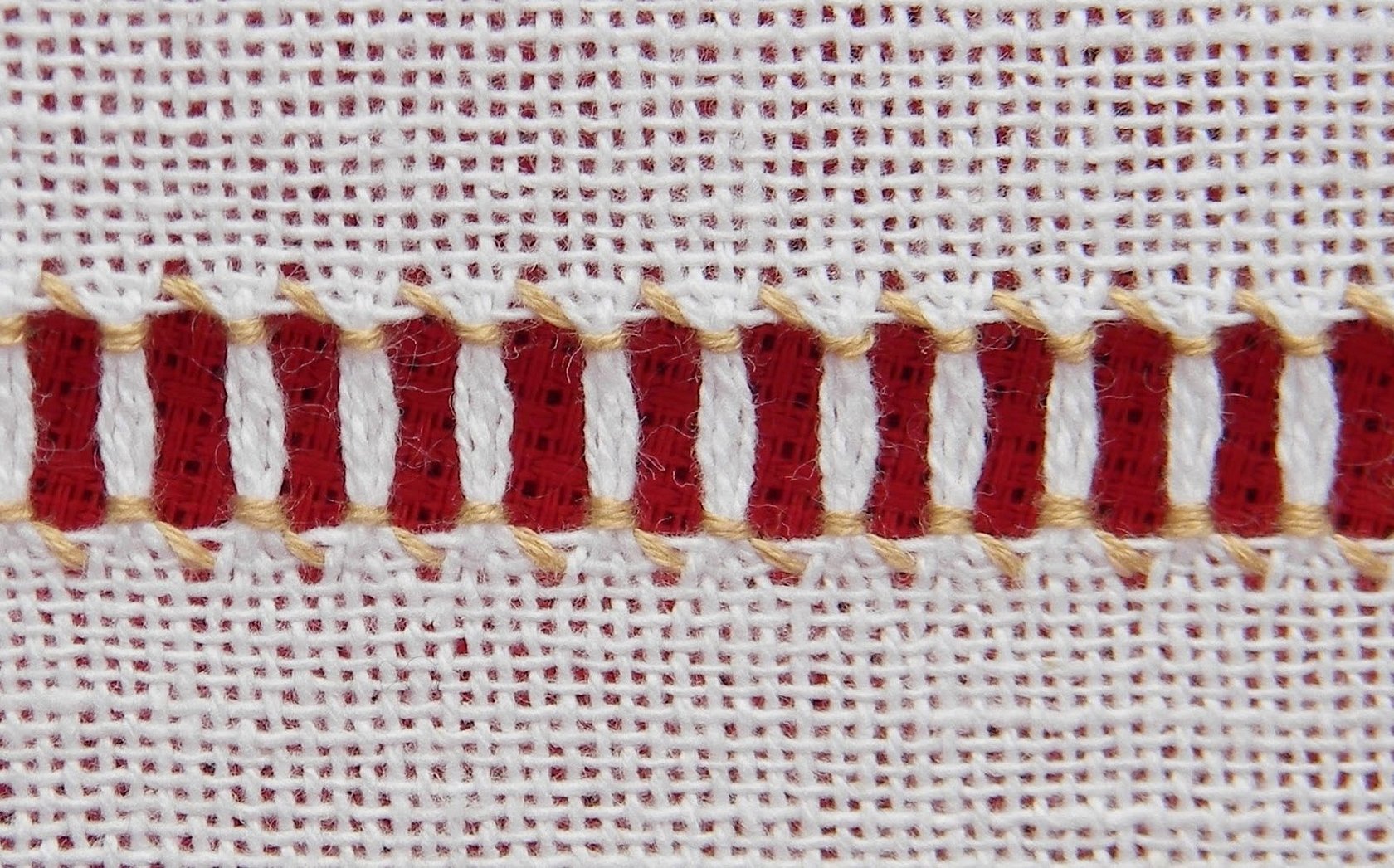
Openwork "double rod"
This pattern is made in the same way as the single one, but it is done on both sides. Both the lower and upper hemstitches are processed.
Please note! "Double rod" is a good basis for the implementation of other embroidery patterns.
About ready-made openwork kits
For fans of the openwork pattern, embroidery kits will be a real gift. They already contain the necessary materials, threads and a needle. The kits also include clear, all kinds of embroidery patterns.
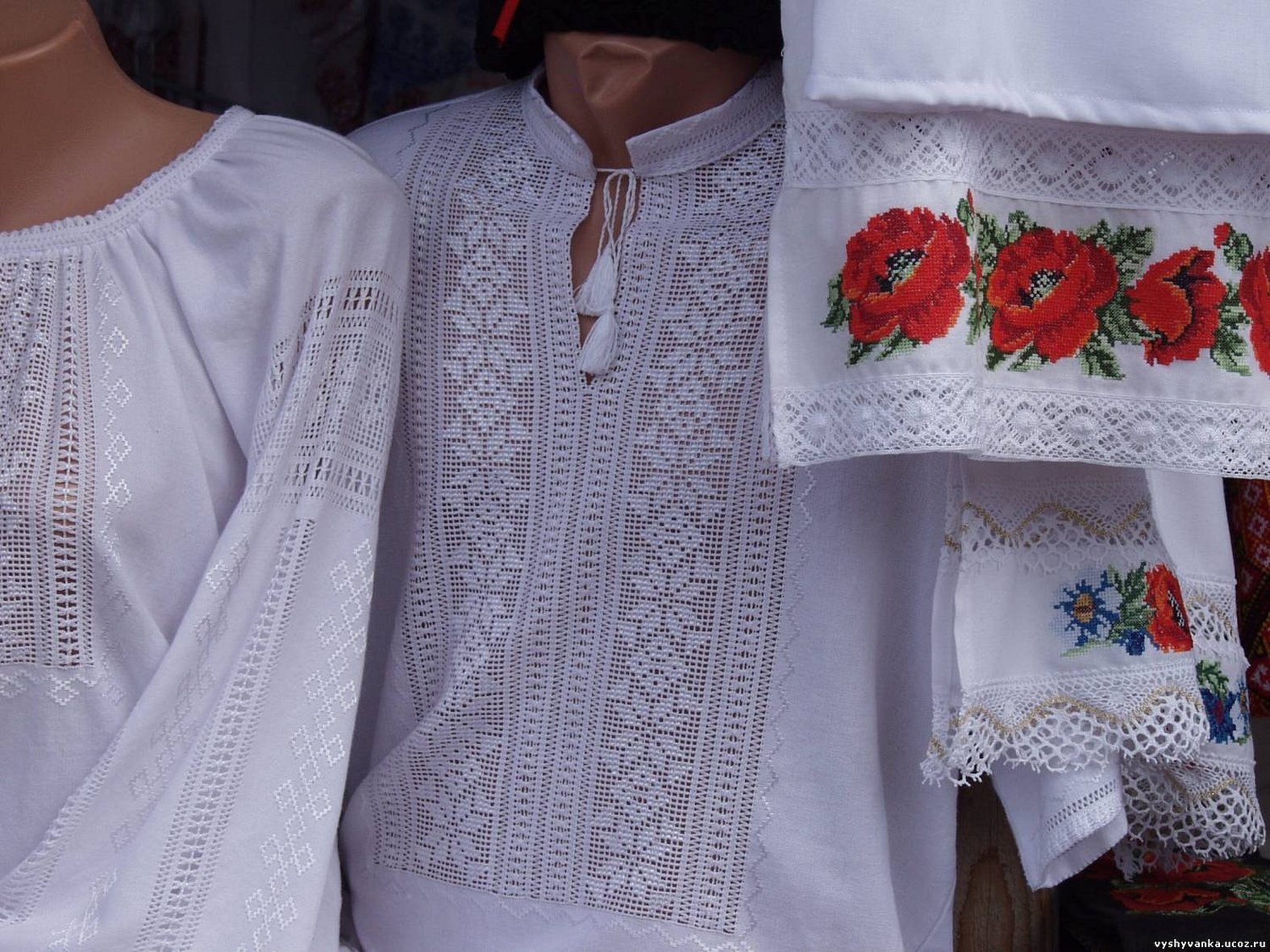
How to Properly Care for Patterned Items
Fabrics with such embroidery require special care. They must be kept in a dark place during storage. The room must be cool and dry, otherwise mold may appear, and the fabric itself will begin to deform.
Clothes with embroidery are not suitable for everyday wear, as the fabric will begin to thin out with frequent washing.
Important! You cannot wash fabric with a pattern in the washing machine.

Openwork is an old beautiful embroidery that has a variety of patterns. All the necessary items for its creation can be easily found in any store, and even a novice embroiderer can cope with such work, however, men have always been recognized as the best embroiderers.




